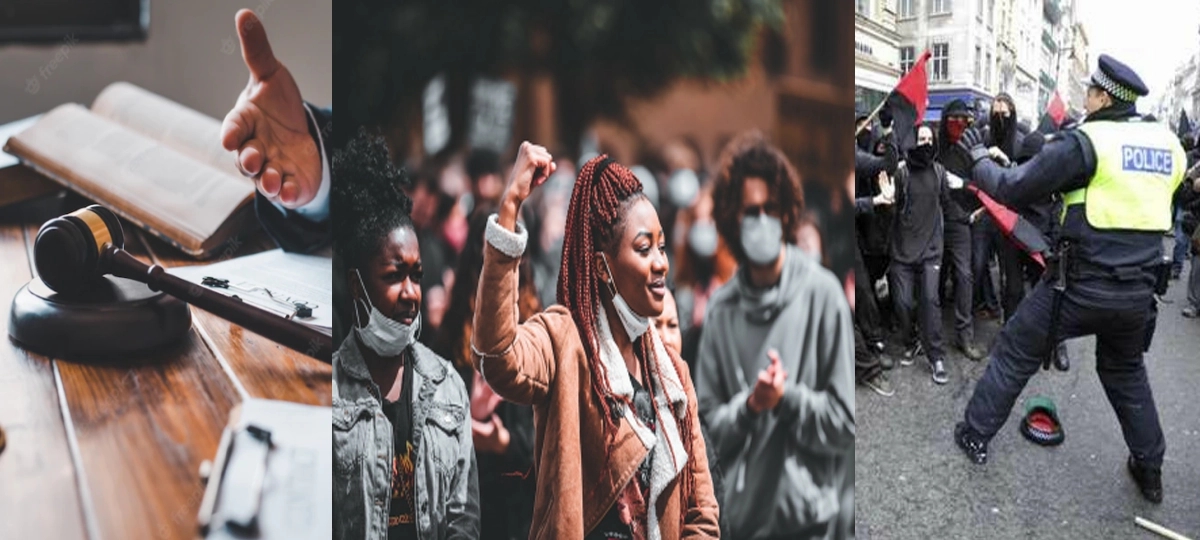Police Body Camera Footage: Who Has Access and How to Get It?
Bodycam
In recent years, body cameras have become a critical tool for law enforcement agencies worldwide. In some places, cops are required to wear body cameras while on patrol. These small, portable devices capture vital footage during police interactions, providing a valuable record of events. From holding polices and officers accountable to securing evidence for investigations, body camera footage plays an essential role in modern policing. But who has access to this footage, and how can it be obtained? In this blog, we'll explore the general processes of accessing body camera footage and look at how different countries handle requests.

Who Can Access Police Body Camera Footage?
Access to police body camera footage depends on a variety of factors, including the identity of requester, the sensitive nature of the footage, and relevant regulations upon disclosure. Below are the key groups that can typically request access to this footage:
Judicial System
Prosecutors, defense attorneys, and judges often need access to body camera footage as part of the legal process. Whether it's evidence in a trial or to settle legal disputes, footage can be crucial in providing an accurate details and facts. When extracting or reporting evidence, they can convert audio evidence directly into text through the evidence management platform, making it easier to review.
The Public and Media
In many countries, the public has the right to request body camera footage, typically through Freedom of Information Act (FOIA) requests.FOIA requests are formal applications that allow individuals or organizations to ask for information from government agencies, including video footage. However, access can be restricted depending on the sensitivity of the footage or if it's part of an ongoing investigation.
Law Enforcement Agencies
Police departments themselves have the primary right to access body camera footage for internal reviews, investigations, and training purposes. Officers may request to view footage from their shifts, while supervisors and investigators use the footage to examine incidents.
Defendants and Legal Representatives
Those who are involved in legal proceedings, particularly defendants, have the right to request body camera footage if it's relevant to their case. This can be critical for building a defense or providing exculpatory evidence in court.
Oversight Bodies
Independent oversight bodies, such as internal affairs or civilian review boards, may request body camera footage to evaluate police conduct or investigate complaints of misconduct.
The General Process for Obtaining Body Camera Footage
The process for obtaining police body camera footage varies depending on the requester and jurisdiction. Here's a general breakdown:
Internal Requests: Law enforcement agencies have streamlined processes for officers or investigators to request footage through their internal systems. This allows for quick access while maintaining data security.
Public Records Requests: Members of the public, journalists, or advocacy groups can file FOIA requests to obtain footage. However, these requests are often subject to approval based on privacy concerns, active investigations, or legal restrictions.
Privacy and Redaction: When footage is released to the public, sensitive information—such as the identities of victims, witnesses, or minors—may be redacted to protect privacy. This can involve blurring faces or removing audio that could reveal personal information.
Retention and Expiration: Police departments have different policies for how long footage is stored. For example, footage from routine interactions may only be retained for a few months, while footage related to active investigations could be kept indefinitely.
Examples of Access in Different Countries
United States
In the U.S., the process for obtaining police body camera footage is often governed by the Freedom of Information Act (FOIA). Citizens can file a request to the relevant police department, but not all footage is automatically accessible. For instance, if the footage is part of an ongoing investigation, it may be withheld. Additionally, privacy laws require that faces of bystanders or victims be blurred, and sensitive audio may be redacted.
An example is California, where the state's Public Records Act allows the public to access body camera footage, but with exceptions for certain types of cases, such as those involving minors or domestic violence.
United Kingdom
In the UK, the Freedom of Information Act (FOIA) and the Data Protection Act govern access to police body camera footage. However, access is more restrictive, especially concerning privacy rights. The police have discretion over whether to release footage, and redaction is common to protect individuals' identities. Scotland Yard, for example, assesses footage requests carefully, balancing public interest with privacy concerns.
Australia
Australia's approach varies by state, but generally, the public can request access to body camera footage under state-specific FOIA laws. However, footage is often heavily redacted to comply with privacy laws, particularly when minors or vulnerable individuals are involved.
Germany
Due to strict privacy regulations under the General Data Protection Regulation (GDPR), accessing police body camera footage in Germany is far more restrictive. The footage is usually limited to court cases or internal police investigations, and public access is rare unless authorized by a court.
13Challenges in Accessing Body Camera Footage
Accessing body camera footage is often complicated by several factors:
Data Integrity Concerns:
Maintaining the reliability of footage as evidence is critical. Manual data transfer methods, such as using USB drives or CDs, are slow, prone to data loss, and vulnerable to tampering. Ensuring authenticity requires secure storage, regular audits, and digital signature verification.
Privacy Concerns:
Footage often includes sensitive information, making it necessary to redact personal details such as faces or license plates. This redaction process can also be particularly time-consuming for lengthy recordings.
Legal Restrictions:
Ongoing investigations may limit access to footage to protect case integrity, delaying its availability.
These challenges show why body camera footage needs to be handled faster and more securely. The Hytera SC580 makes it easy. It records evidence and responds fast.
Hytera's Digital Evidence Management (DEM)
Hytera's Digital Evidence Management (DEM) platform works together with SC580 and provides an advanced, secure, and efficient solution to overcome these challenges in managing body camera footage:
Preserving Data Integrity:
Hytera DEM uses AES-256 encryption and digital signature verification to ensure data remains secure and tamper-proof from the moment it is recorded to its presentation in court. Unlike manual data transfer methods, DEM enables seamless and secure digital workflows, reducing the risk of data loss or unauthorized access. Even in remote disaster scenarios, DEM ensures no data loss, providing law enforcement with reliable access to their evidence.
Simplified Privacy Protection:
With built-in tools for audio redaction and face/license plate blurring, Hytera DEM allows sensitive data to be protected while still making the footage available for responsible use in investigations or legal proceedings.
Streamlined Evidence Management:
The platform supports end-to-end management of digital evidence, including collection, storage, querying, sharing, and analysis of videos, audio files, photos, and more from body cameras and CCTV systems.
Real-Time Analytics and Reporting:
Hytera DEM features real-time analytics and user-friendly dashboards to help law enforcement agencies efficiently organize and utilize their evidence, improving both transparency and accountability.
12By addressing common challenges such as data integrity, privacy protection, and redaction efficiency, Hytera's DEM empowers law enforcement agencies to focus on their mission of serving the public while upholding transparency, legal compliance, and community trust. The seamless integration of advanced security measures and user-friendly features makes Hytera DEM an indispensable tool for managing digital evidence in modern law enforcement.






